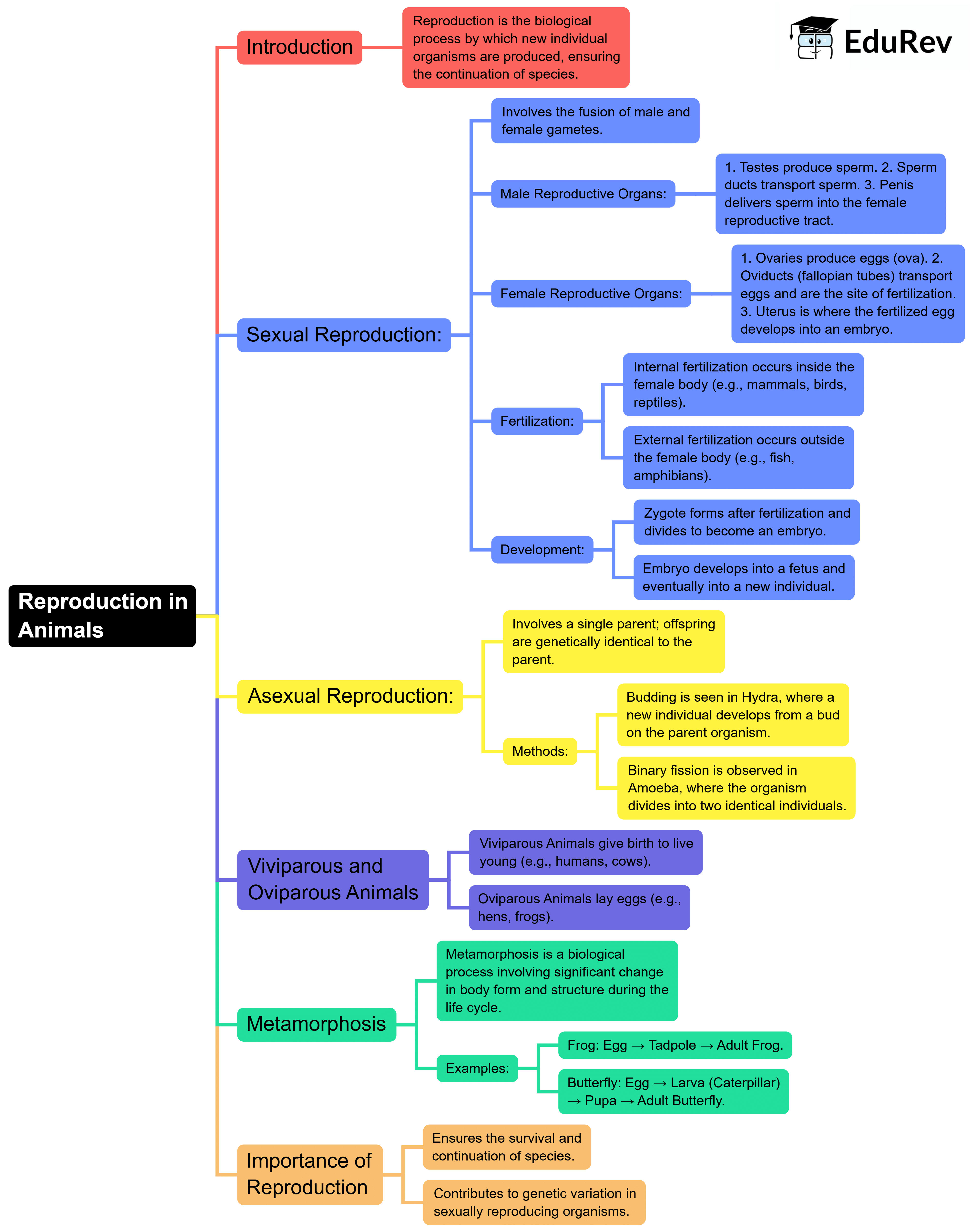Class 8 Exam > Class 8 Notes > Science Class 8 > Mind Map: Reproduction in Animals
Mind Map: Reproduction in Animals | Science Class 8 PDF Download

The document Mind Map: Reproduction in Animals | Science Class 8 is a part of the Class 8 Course Science Class 8.
All you need of Class 8 at this link: Class 8
|
91 videos|296 docs|44 tests
|
FAQs on Mind Map: Reproduction in Animals - Science Class 8
| 1. What are the main types of reproduction in animals? |  |
Ans. The main types of reproduction in animals are sexual and asexual reproduction. Sexual reproduction involves the fusion of male and female gametes, leading to genetic diversity among offspring. Asexual reproduction, on the other hand, does not involve gamete fusion and allows for offspring to be produced from a single parent, resulting in genetically identical clones.
| 2. How does sexual reproduction contribute to genetic diversity? |  |
Ans. Sexual reproduction contributes to genetic diversity through the processes of gamete formation (meiosis) and fertilization. During meiosis, homologous chromosomes undergo recombination, leading to new combinations of genes. When gametes from two parents fuse during fertilization, the resulting zygote has a unique genetic makeup, enhancing the genetic variation within a population.
| 3. What are some examples of asexual reproduction in animals? |  |
Ans. Examples of asexual reproduction in animals include fission, budding, and fragmentation. In fission, an organism splits into two or more parts, each capable of growing into a new individual, as seen in amoebas. Budding involves the formation of a new organism from a small outgrowth on the parent, as observed in hydras. Fragmentation occurs when an organism breaks into pieces, each capable of regenerating into a new individual, common in starfish.
| 4. What is the role of hormones in animal reproduction? |  |
Ans. Hormones play a crucial role in regulating various aspects of animal reproduction, including the development of reproductive organs, the menstrual or estrous cycles, and the timing of mating behaviors. For instance, in mammals, hormones like estrogen and progesterone regulate the reproductive cycle, while testosterone influences male reproductive traits and behaviors.
| 5. How do environmental factors influence animal reproduction? |  |
Ans. Environmental factors such as temperature, light, and availability of resources can significantly influence animal reproduction. For example, many species have seasonal breeding patterns that align with favorable environmental conditions, such as abundant food and optimal temperatures, to increase the chances of survival for their offspring. Changes in environment, like climate change, can disrupt these patterns and affect reproductive success.
Related Searches
















